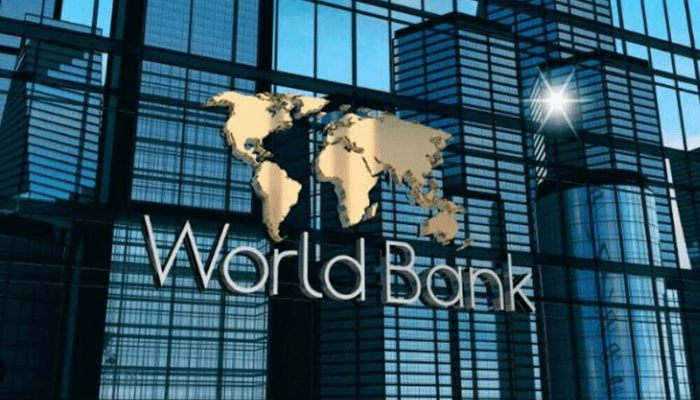WASHINGTON D.C|| Nigeria’s general government gross debt, (debt-to-GDP) is projected to decline steadily over the next two years, according to the latest Fiscal Monitor Report released by the International Monetary Fund (IMF) at the ongoing Annual Meetings of the World Bank and IMF, in Washington D.C.
The report indicates that Nigeria’s debt-to-GDP ratio will fall from 39.3 percent in 2024 to 36.4 percent in 2025, and further to 35 percent in 2026, reflecting growing fiscal discipline and economic stability.
According to the IMF, the figures include overdrafts from the Central Bank of Nigeria and liabilities of the Asset Management Corporation of Nigeria (AMCON).
The IMF’s projection signals a gradual improvement in Nigeria’s debt sustainability outlook, driven by expected fiscal consolidation measures, improved revenue mobilization, and the positive effects of economic growth. A declining debt-to-GDP ratio implies that the country’s debt burden is shrinking relative to the size of its economy, a development that underscores progress in public financial management and reduced dependence on borrowing.
Read also: Nigeria takes over G-24 leadership as Cardoso, Uzoka-Anite lead talks at IMF/WorldBank meetings
Speaking at a press conference on the report, Vitor Gaspar, director of the IMF’s Fiscal Affairs Department, emphasised that Nigeria’s fiscal stance remains consistent with efforts to curb inflation while supporting sustainable growth. He was joined by Era Dabla-Norris, Deputy Director; Davide Furceri, Division Chief; and Tatiana Mossot, Senior Communications Officer, all from the IMF’s Fiscal Affairs Department. They responded to inquiries about Nigeria’s new borrowing plans and offered policy advice to help the country maintain fiscal stability.
Gaspar noted that Nigeria has made notable progress in reforming its tax administration and streamlining its tax codes to boost revenue without placing undue pressure on low-income earners or the business sector. He explained that reforms have helped reduce tax expenditures and create a fairer tax system, while the government continues to improve efficiency in public spending. He stressed that there remains significant scope to enhance revenue collection through further administrative reforms and to increase social spending aimed at addressing vulnerabilities within the population.
“The policies being implemented in Nigeria are consistent with a structural fiscal framework that strengthens both the revenue and expenditure sides of government operations,” Gaspar said. “There is still room to improve tax administration and spending efficiency, while also expanding social programmes to protect vulnerable groups.”
The IMF’s broader Fiscal Monitor also paints a cautious picture of global public debt dynamics. Gaspar disclosed that global public debt prospects have deteriorated further since the last meeting in April, with debt projected to exceed 100 percent of global GDP, the highest level since 1948. He warned that debt could rise even faster under adverse conditions, with a 5 percent risk scenario pushing global public debt to 124 percent of GDP by 2029.
According to the IMF, fiscal risks remain unevenly distributed across countries. Major advanced economies such as Canada, China, France, Italy, Japan, the United Kingdom, and the United States have debt levels exceeding 100 percent of GDP but benefit from deep financial markets and strong policy credibility.
“So drivers of global debt development, from a mechanical decomposition viewpoint, the countries that are pushing the global public debt ratio are large countries”.
In contrast, many emerging markets and low-income countries, despite having lower debt ratios, face higher fiscal risks due to limited policy space and weaker financing access. The IMF’s latest assessment shows that 55 countries are currently at high or distressed fiscal risk levels.
Gaspar explained that rising global interest rates have drastically altered the debt landscape, increasing borrowing costs and straining government budgets. Interest spending is projected to rise to 2.9 percent of global GDP in 2025, up from 2 percent in 2020, and could continue increasing through the decade. He added that public spending pressures from defense needs to climate and disaster responses combined with resistance to higher taxes, are pushing many countries toward unsustainable fiscal paths.
He emphasised that restoring fiscal buffers is essential to safeguard economies from future shocks and maintain financial stability. “Starting from already high deficits and debts, the persistence of spending above revenue will push debt to ever higher levels,” he warned.
“Countries must act now to strengthen fiscal discipline, build resilience, and enhance growth prospects through effective public spending and institutional reforms.”
Gaspar further highlighted that countries can support long-term growth by adjusting the composition of their budgets to prioritise education, infrastructure, and other growth-friendly areas, without necessarily increasing total expenditure. Enhancing spending efficiency, improving governance, transparency, and accountability, he said, are crucial to building citizens’ and investors’ trust, key elements for sustainable financing and inclusive development.
He reaffirmed the IMF’s commitment to supporting member countries, including Nigeria, in designing fiscal and structural policies that promote growth, safeguard stability, and strengthen public trust in government institutions.

